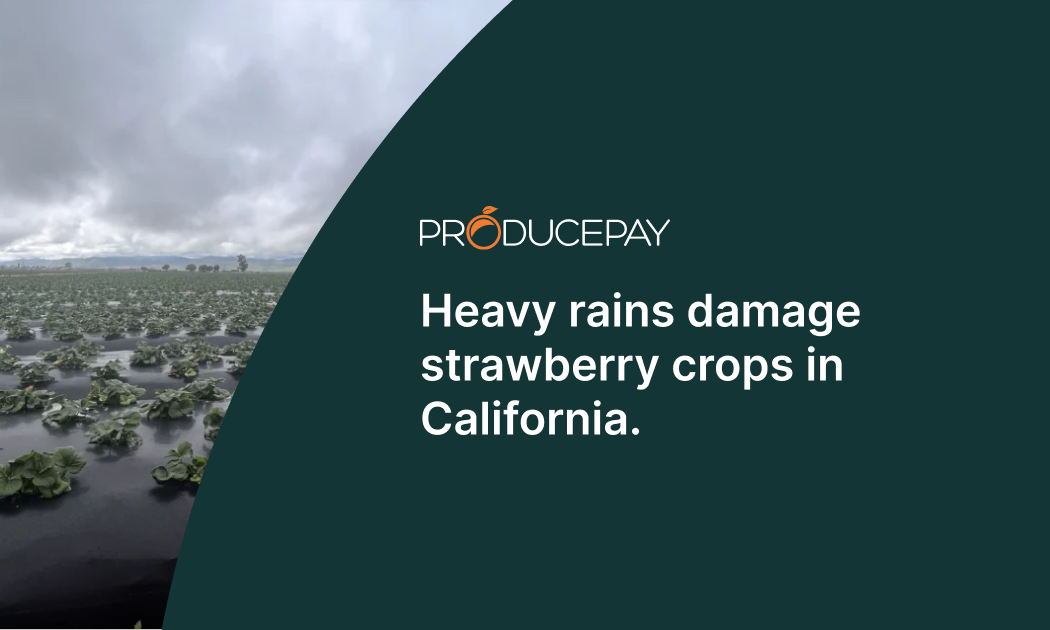
Heavy rains damage strawberry crops in California.
California growers are currently experiencing the adverse effects of the state’s recent deluge of rain and flooding.
In January, producers hoped the oncoming rains would alleviate the state’s long-running drought. However, concern rose as storm after storm passed over California’s agricultural heartland, damaging winter crops, particularly strawberries.
Read on to find out about the details of the situation – and what it means for the present and future of the strawberry trade in both the US and Mexico.
What is the current situation of strawberry crops in California?
ProducePay Field Operations team estimates a loss in quality of around 15% to 20% of the state’s strawberry production. This, however, does not represent product loss, with most of them being destined for processing.
The strawberry season in the state only began on January 23, which means that strawberry fields have not been directly affected. However, excessive humidity can make managing fungi during harvest time difficult.
How does this impact the state’s strawberry season?
The current conditions have not only affected the strawberry harvest process, but also the distribution and export of the commodity.
This is highly significant, as 90% of the strawberry production in the entire United States comes from California. Nearly two thirds come from the Santa Maria region, including Monterey, Santa Cruz, Santa Clara, San Luis Obispo and Santa Barbara’s counties (USDA) – some of the most affected regions
In addition, according to the California Department of Food and Agriculture, in 2021 alone, the value of strawberry exports surpassed the 475 million dollars.
Challenges in the current harvest process could lead to delays in strawberry shipments; a situation that other producing countries could take advantage of. This is very much the case for Mexico, where peak strawberry harvest is about to begin.
What can growers and buyers do?
During the following weeks, it will be critical for fresh produce buyers to be able to satisfy their demand in full, assuming their growers were affected. Meanwhile, for the impacted growers it will be vital to have the necessary resources – economic, physical and human – for the rapid movement of their current harvest and a speedy recovery of their operations.
